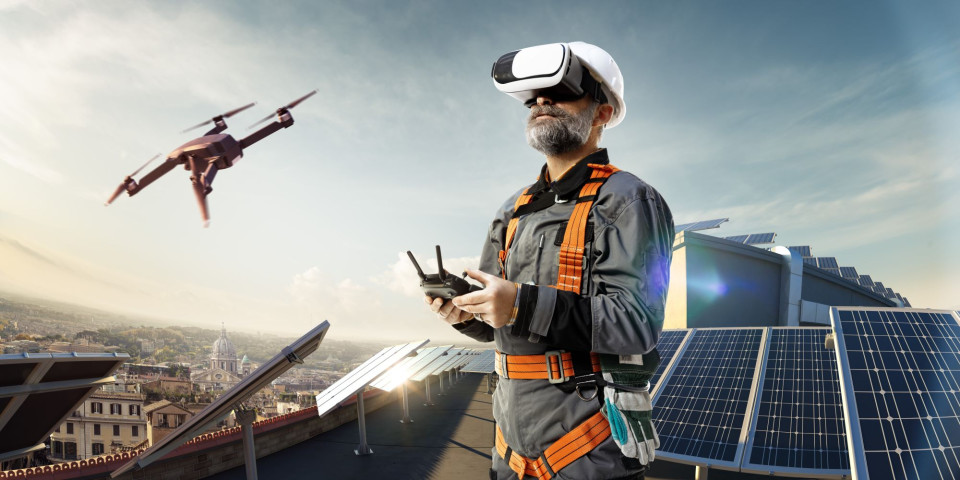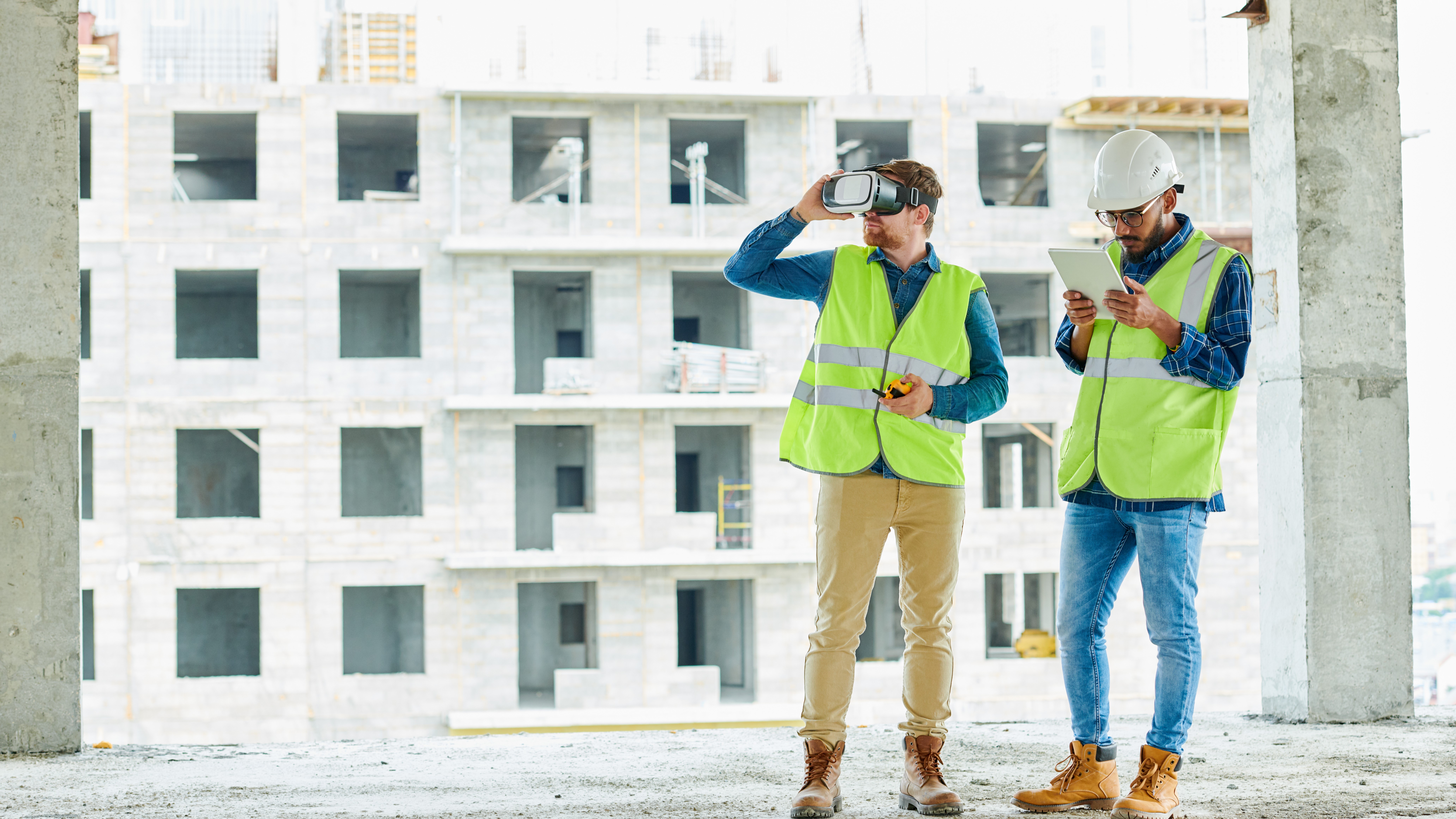Latest News
How New Technology is Revolutionising Construction
Posted on Friday, 25th June 2021

Throughout history, the construction industry has always been at the cutting edge of implementing new technology. New innovations are always being found to make construction work quicker, more effective and safer. In today’s blog we take a look at just a few of the ways in which digital technology is revolutionising the construction industry in 2021.
What is digital construction?
Digital construction is a broad term which refers to a range of tools and processes which use digital technology to improve the construction process. This could include everything from using online communication tools, implementing AR (Augmented Reality) or VR (Virtual Reality) to plan buildings and train staff, using robots to complete dangerous tasks on site, and much more.
Almost every construction project will utilise some form of digital construction technology. However, larger-scale projects with increased expenses and complexities are more likely to use digital technology to complete work effectively. Using this technology correctly will mean that much of the work that would previously be done by people can be completed by robots, drones, or AI. This reduces the costs to employers and means certain dangerous tasks can be completed without risk to workers.
Building Information Modelling (BIM)
BIM construction is revolutionising the way organisations approach building work. This process utilises new technologies to develop a more holistic approach to building projects. Using 3D modelling on cloud-based platforms, organisations can use BIM processes to plan, design and build structures in a collaborative and effective way.
Recently, some developers have even started using 4D technology to help health and safety planning on construction sites. 4D BIM construction sequencing allows developers to factor time into their modelling, allowing them to plan and schedule the project’s progression from start to finish more accurately.
Benefits of VR in construction
VR technology creates a virtual world which users can interact with as if they were really there, usually using a headset to experience this artificial scenario. This technology might be most commonly associated with gaming, with equipment such as the Oculus Rift and PlayStation VR, but it also presents many practical possibilities when it comes to the working world.
Firstly, this technology is a fantastic tool for training construction staff. VR can be used to create realistic and accurate versions of construction scenarios which learners can interact with, without the dangers of a real-life construction site. This could be of particular use for workers who struggle with theoretical training or have difficulty with reading or writing.
VR tools can also be incredibly useful for planning, mapping and designing construction projects. Creating a 3D visual representation of the project can be a great tool for designers, architects and builders as it will allow them to have a clearer idea of what the finished building should look like, and think through any potential problems they may encounter.
But this only scratches the surface on how these tools could be used to help construction workers. Check out this article on PBC which takes a more in-depth look at the future of virtual reality in construction.

AR for construction
AR stands for Augmented Reality, which is slightly different from Virtual Reality. Where VR creates a completely artificial simulation of your surroundings, AR headsets adds information to what exists in the real world. For example, it could be used to overlay 3D models of buildings over the real-life structure, allowing workers to compare the plans to the real building more accurately.
Like Virtual Reality, AR can help workers get trained and also complete tasks on site. Recently, researchers in Scotland have suggested these innovations in AR and VR could help boost the uptake of remote site inspections. Due to the popularity of AR in construction, you can now even get AR construction helmets which integrate this technology in head-protecting helmets for use on site.
How are robots used in construction?
Perhaps one of the most obvious areas that technology has advanced in construction industry is in regard to the use of robots. With the dangerous tasks involved in construction it makes sense to use robots to avoiding risking workers whenever possible.
These technological advances mean that more and more tasks can be completed by robots, including everything from road maintenance to bricklaying. Advances in AI (Artificial Intelligence) mean many robots do not need workers to operate them, freeing them up to complete other tasks. Some workplaces are now even using self-driving vehicles such as dumpers and bulldozers.
How drones are used in construction
More and more organisations are starting to use drones on construction projects. These tools can be controlled remotely or through AI and allow workers to get aerial views of building areas to accurately perform site surveys, inspections and mapping.
There are a huge variety of drones available to suit the needs of different working environments. Certain models come with features that can provide operators with live streams, data transmission or the ability to transport goods. These can be invaluable for speeding up the process of building work, especially on large-scale projects.
How does AI help the construction industry?
Artificial Intelligence is more than just robotics and drones though. AI can be used in a variety of ways to automate the process of construction work and create a safer working environment.
AI can process a lot of data very quickly, identifying patterns and likely outcomes in a much quicker and accurate way than humans can. This can be vital in contingency planning and seeing thorough ‘what-if’ scenarios on site. This allows workers to prepare for likely scenarios ahead of time, improve site efficiency and safety procedures.
But this is just the tip of the iceberg when it comes to the potential of AI. Check out this article by Forbes which goes into more detail about the innovative ways that AI is being used on construction sites.
How do I get my virtual CSCS card?
The advancement of digital technology has meant that many construction awarding bodies have re-assessed how best for workers to prove their qualifications on site. To this end, CSCS have introduced their virtual card scheme.
The CSCS virtual card scheme allows workers to display their qualifications without the need for a physical card. This is done by workers downloading the free CSCS app, which will allow them to display a full list of their qualifications, training, occupation and the expiry date of your card.
This makes the process of displaying qualifications and proving competence much more straight forward and easy for both workers and employers. Find out more about the process of applying for CSCS cards in our blog ‘Everything You Need to Know About CSCS Cards’.
Construction Awards 2021
As construction is always at the forefront of technological advancements, the annual Construction News Awards have categories dedicated to those companies who are at the cutting edge of technology in the industry. Companies such as Balfour Beatty, Mace, Skanska UK, Byrne Bros and Willmott Dixon are nominated in categories including ‘Best Innovation’, ‘Best Use of Technology’ and ‘Carbon Reduction Champion’ at the 2021 awards. This year’s event takes place on the 15th September.
Essential Site Skills Training
If you are looking for construction training, ESS deliver a wide range of courses and NVQs to meet your needs. Head over to our course index to see a full list of training options. You can also call our team on 0115 8970 529 or email us at info@essentialsiteskills.com.


